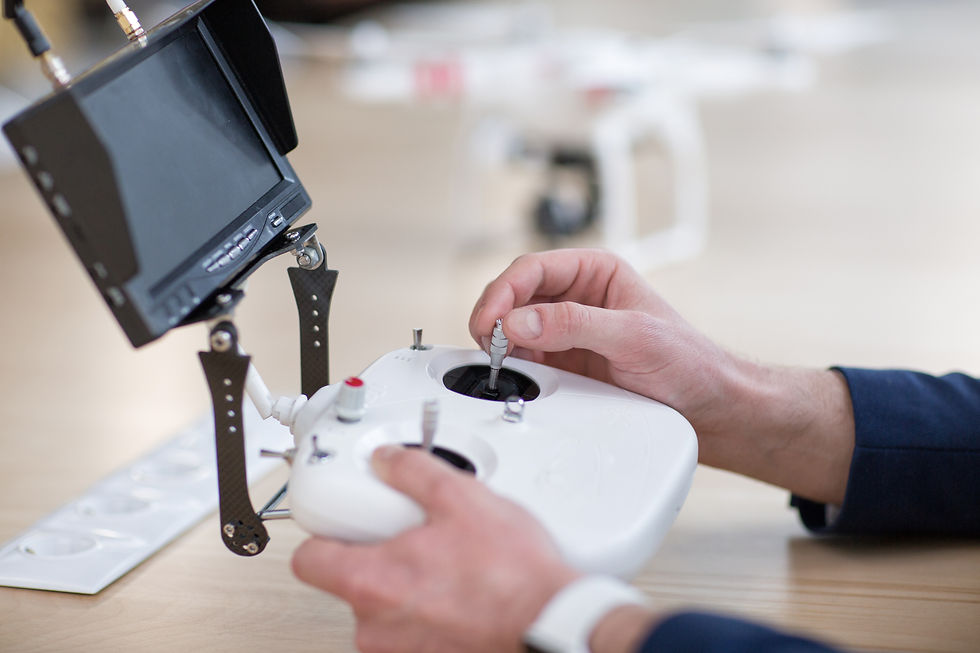BVLOS OPERATIONS - DAA WAIVER and EXEMPTION
- Jose Martin

- May 18, 2024
- 3 min read

Our collaboration with the entire American Aerospace Technologies, Inc. (AATI) team has been a fantastic journey, and the collective effort has led us to these significant milestones in UAS regulation and operations.
I want to thank Charlton Evans (ESS) and David Yoel (AATI) for entrusting me with creating the safety case.
Key to our project was the early development of a CONOPS and risk profile. This essential step, often overlooked, is important in UAS operations. We didn't just jump into solutions; we first understood the landscape by creating CONOPS, risk profiles, and white papers that elaborated on strategic and tactical mitigation. This documentation helped us grasp factors like traffic density, aircraft types, airspace, and airport environments, ensuring a well-rounded approach to risk. In addition, configuration control and a systematic approach to system development and testing for the aircraft type are under consideration.
Throughout this project, we worked closely with the FAA. Their collaboration and guidance have been invaluable, and we are grateful for their support in navigating the approval processes effectively. The FAA granted AATI an exemption to operate the AiRanger UAS for BVLOS operations up to 5,000 feet AGL, significantly above the typical 1,500 to 2,500 AGL range used by manned aircraft for pipeline patrols. This altitude positioning minimizes conflicts with agricultural and other low-flying aircraft. A series of flight test cards and tests agreed with the FAA to demonstrate and validate the effectiveness of the AiRanger's Detect and Avoid (DAA) system, affirming its performance and maturity for the operations outlined in our CONOPS.
A clear understanding of the risk profile and creating a data-driven safety case allowed AATI to secure Exemption No. 22341 and a special airworthiness certificate (COA 2024-WSA-418-SAC), marking this regulatory milestone.
Summary of the Exemption and Waiver:
Exemption No. 22341:
AATI received FAA Exemption No. 22341, allowing the operation of the AiRanger unmanned aircraft for Beyond Visual Line of Sight (BVLOS) operations up to 8,000 feet MSL in Class E and G airspace. This exemption includes relief from several sections of Title 14, Code of Federal Regulations related to aircraft airworthiness, maintenance, and flight operations, specifically §§ 61.133(a), 91.7(a), 91.9(b)(2), 91.105(a)(1), 91.105(a)(2), 91.107, 91.109, 91.121, 91.203(a), 91.203(b), 91.405(a), 91.407(a)(1), 91.409(a)(1), 91.409(a)(2), and Part 21, Subpart H. The exemption facilitates critical infrastructure inspection, emergency management, wildfire monitoring, R&D, and training, enhancing safety and operational flexibility.
Waiver (COA 2024-WSA-418-SAC):
Aircraft Operating Area and Altitude:
Operations Area: AiRanger UAS operations are authorized in Class E and G airspace at or below 8,000 feet Mean Sea Level (MSL). The specific operational boundaries are defined by the following coordinates, covering parts of the San Joaquin Valley, California: 36°00’02.00”N / 121°00’40.18”W 36°24’52.66”N / 120°16’37.18”W 35°35’18.90”N / 119°10’11.30”W 35°09’30.90”N / 119°19’12.20”W 35°02’37.10”N / 119°06’36.40”W 34°52’33.10”N / 119°11’42.50”W
Weather Conditions for Operations:
The operations are required to be conducted under Visual Flight Rules (VFR) conditions. This implies that the weather conditions must be clear enough for the pilot-in-command (PIC) or visual observers (VOs) to maintain a visual line of sight with the aircraft and to see and avoid other aircraft and obstacles. Specific weather requirements include maintaining a minimum visibility of 3 statute miles and avoiding operations near clouds (the UAS must not operate less than 500 feet below or less than 2,000 feet horizontally from any cloud).
Aircraft and System Specifications:
Aircraft Model: AiRanger Unmanned Aircraft System (UAS)
Type: Fixed-wing
Wingspan: 18.4 feet
Gross Weight: 220 lbs
Navigation and Control Systems: A Mode S Transponder with ADS-B In/Out capabilities enhances visibility to other aircraft and air traffic control. Detect and Avoid (DAA) sensor package, equipped with radar and integrated avoidance software, ensuring the UAS can detect and maneuver away from other airborne objects autonomously. Anti-collision lights at the top and bottom of the vehicle that are operable and on for all (day and night) flight operations Piccolo Autopilot, a sophisticated flight management system that automates many piloting tasks. Forward-looking tail camera providing real-time visual feedback to the pilot-in-command (PIC) for enhanced situational awareness.
Ground Control Station (GCS):
The AiRanger's GCS is fully self-contained, supporting all command-and-control functions required for the UAS operations. It is equipped to handle maintenance functions and incorporates single-phase 60 Hz power supported by portable gas, propane, or diesel generators.
Pilot Qualifications
The pilot qualifications for operating the AiRanger Unmanned Aircraft System (UAS) under the specific regulations and waivers granted to American Aerospace Technologies, Inc. include the following key requirements:
The Pilot in Command (PIC) must hold at least a Commercial Pilot License with an Instrument Rating. This ensures the pilot has sufficient experience and skill to handle complex flight operations and navigation under various weather conditions.
Besides a Commercial Pilot License, the PIC must also hold a current Part 107 Remote Pilot Certificate. This certificate specifically pertains to the operation of unmanned aircraft systems and covers knowledge areas relevant to UAS operations, such as airspace classification, regulation, and operational requirements.




Comments